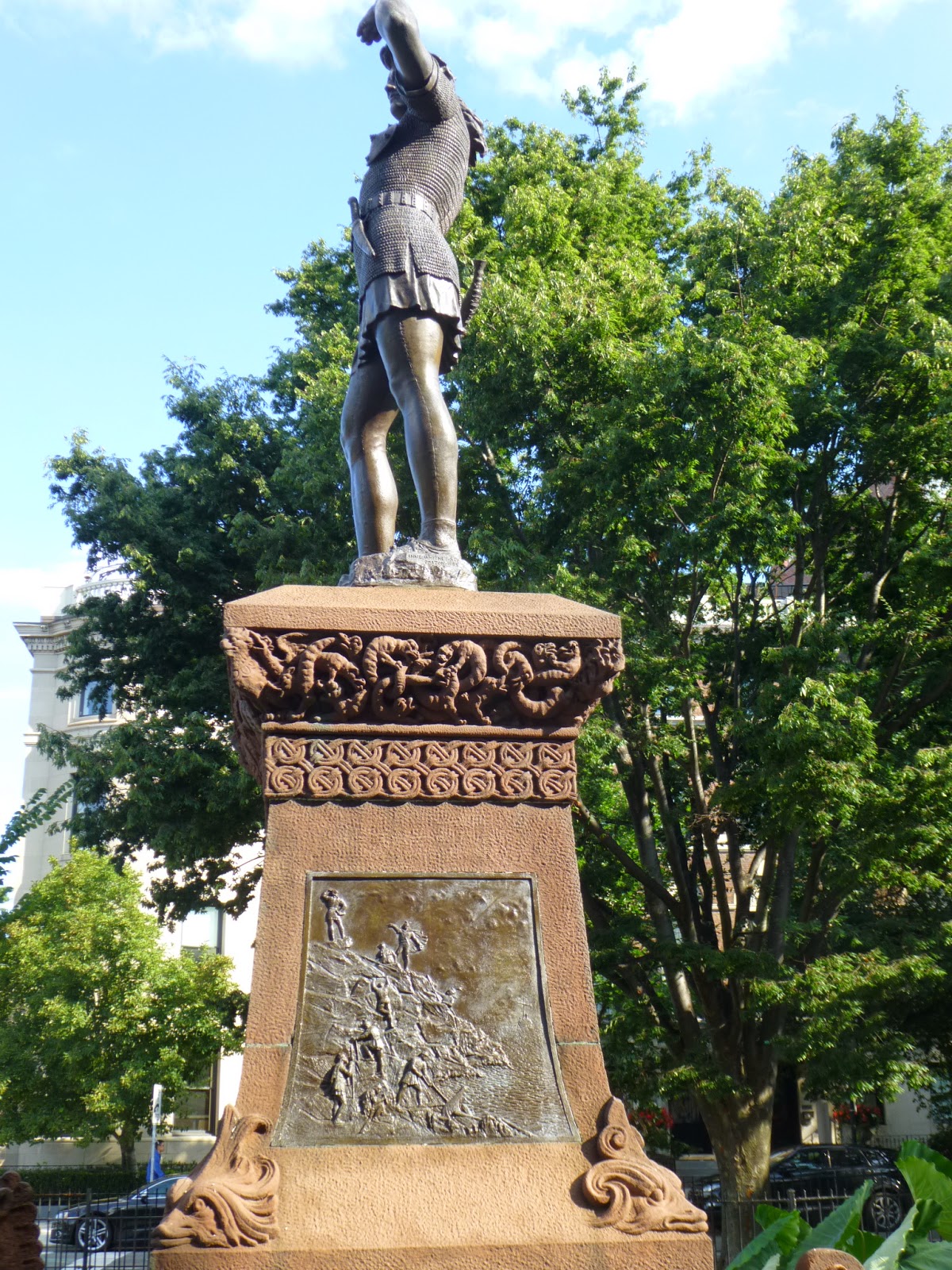Vendome Fire Memorial
by
Ted Clausen and Peter White
GPS: N 42° 21.118; W 71° 04.672
Short Description:
The Vendome Fire Memorial is located on Commonwealth Avenue Mall at Dartmouth Street in the Bay Bay section of Boston, MA.
 |
| Left Side |
 |
| Middle |
 |
| Right Side |
Long Description:
On June 17, 1972 as fire raced through the Hotel Vendome the rear floors of collapsed killing nine and burying sixteen other firefighters. A bronze and black granite 4' high by 1' wide semi-circular granite memorial was erected across the street from the former location of the Hotel Vendome and dedicated on June 19, 1997. Funds for the memorial came from the the Edward Ingersoll Browne Trust Fund in 1977.
The memorial is inscribed with sequence of events, quotations from firefighters, and the names and dates of the nine firefighters who died in the fire. At the west end of the wall there is a bronze sculpture of a firefighter's jacket and helmet draped over the top of the wall.
Inscriptions:
Timeline:
2:35 pm there is smoke in the cafe of the Hotel Vendome, Commonwealth Avenue & Dartmouth St.
2:40 pm Firefighters arrive, finding smoke & flames coming from the third & fourth floors
2:44 pm District Four reports box 1571 a working fire.
2:46 pm a second alarm is struck.
3:02 pm a third alarm is struck.
3:06 pm a fourth alarm is struck.
5:20 pm the fire is contained. Companies start to make up, preparing to leave the building.
5:28 pm without warning four floors of the Vendome collapse, burying 25 firefighters.
2:00 am firefighters search the rubble until all are accounted for. 9 firefighters are dead, 16 are injured
Quotations:
When that bell rings we are all the same. We are a team. We have one job to do.
Our teamwork is everything; our life depends on every other firefighter. You never forget this.
We don't talk about the tragic fires. It would be too much. We go home to our families.
We save lives & property. We are not heroes. We do what we love. We do our jobs.
Our families know that each day could be our last. It's just part of the work
The worst death, but you learn to let it go. You wouldn't be able to do your job.
There is the unknown in every fire.
You do your job, follow the plan; still something can go wrong.
Investigations reveal that the Vendome did not collapse because of the fire, but from structural weakness.
Sometimes you have to say there's nothing more we could have done.
Losing a firefighter brings back every other loss.
Firefighter's Names and Dates:
FF Thomas W. Beckwith
Engine Co. 32
March 22, 1937 - June 17, 1972
FF Joseph F. Bouche, Jr.
Engine Co. 22
January 10, 1944 - June 17, 1972
Lt. Thomas J. Carroll
Engine Co. 22
May 18, 1920 - June 17, 1972
FF Charles E. Dolan
Ladder Co. 13
September 6, 1924 - June 17, 1972
Lt. John E. Hanbury Jr.
Ladder Co. 13
May 20, 1926 - June 17, 1972
FF John E. Jameson
Engine Co. 22
March 20, 1920 - June 17, 1972
FF Richard B. Magee
Engine Co. 33
Sept 17, 1932 - June 17, 1972
FF Paul J. Murphy
Engine Co. 32
March 5, 1936 - June 17, 1972
FF Joseph P. Sanwik
Ladder Co. 13
August 8, 1924 - June 17, 1972














































